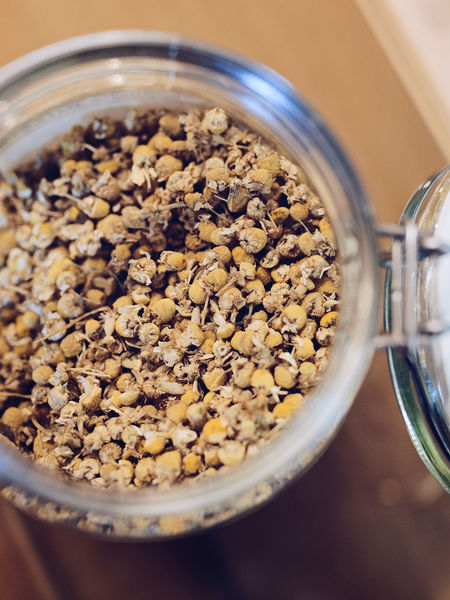Sleepy Teaxperiment


The Moral of the Story is That I Should’ve Just Done Chamomile
I’m sorry, I’m an addict! I needed another drink.
This one was for the opposite of waking up, carrying on, and plugging through the day without excess gas -it was meant to help me get to sleep.
In health-supplement culture, it’s easy to Google up melatonin, see all the blogger recommendations, and figure, “Awesome, I’ll just go to the drugstore, pick up a bottle, and pop a pill to deal with it. Problem confiscated.”
However, I came to this problem with a background in messing with plant matter inside a cup, and getting certified in it. So forgive my impulse to try it the old-fashioned way, but I wanted to see if I could accomplish my goal with a tea fix instead.
The parameters weren’t too stringent. Just to come up with a nonaddictive, herb-or-spice-based drink that could beckon Mr. Sandman hither, and also do the double duty of healing during sleep. (Muscles need that when their owner likes to Pick Things Up And Put Them Down, doing so in the hopes that those things would one day be more than, or in proportion to, her bodyweight. Just for function’s sake—the body needs something to kick it into adaptation, but that’s a whole fitness journey in and of itself, and another article entirely. Long story short, sumo deadlifting leads to happier roundhouse kicks.)
Chamomile would have been the traditional approach, but you know what? I was craving something fruity.
So, my first run at this experiment involved unceremoniously dumping a giant ½ cup of dry Blood Orange into a pitcher, brewing it with just enough hot water not to break the glass—until it did, teaching a very valuable lesson about thermal energy and heat pressure—and keeping it in the fridge. It could last for days, steeping itself ever redder and darker, echoing the lure of sangria before bed.
Man, oh man. Tastiest experiment ever.
Is there any greater pleasure than coming home to a cup that, through its own power, comes out more rich and sweet than the organic juices sold around the corner? I would walk myself into the kitchen, bedraggled from work and the infinite microtraumas of the 42nd Street subway at rush hour, and the singular thing I could depend on was that righteous brew waiting for me.
Just maybe, I could understand why some folks talked about the one glass of red wine on Friday night. I didn’t drink alcohol by then, but that cold cup of rosehips, citrus, and hibiscus was inexorably—sinfully—delicious.
And totally anti-inflammatory, to the point where trying to look up the benefits of the ingredients would only make me feel legitimately drunk. I did note, however, that the hibiscus had stress-relieving antioxidants, which helped me sleep like a—
Zzz.
Forgive me, again.
At any rate, the fruity blend was perfect after a long day at a luxury commercial wellness center, where we treadmilled in less sunlight than the middle of Reykjavik.
However, I was conducting this experiment during March of 2015, almost April, when climate change allowed us inklings of warm weather for the coming spring. And speaking of warmth, Manhattan apartments have that characteristic of being wonderfully overheated.
Why does this matter?
Because hibiscus—and all its soothing freshness—didn’t work six months later, in a different apartment, where I needed to curl myself in a sleeping bag under blankets to stay toasty.
I needed a space heater in my cup.
That’s when I eyeballed one my roommates, who was drinking something hot and orange, and smelled a little earthy. Turmeric!
“How do you do that?” I asked.
“I just do the ground turmeric,” she said.
It couldn’t have been simpler. $1.99 spice from the local student-budget grocery chain (rhymes with Sailor Schmoe’s), hot water from an electric kettle, and—
Zzzzzzz.
You couldn’t wake me for beans.
Unless, again, they were coffee beans.
Thus, the result of these experiments endowed me with two excellent sleep options for the seasons. If you’d like to replicate these endeavors—please, kids. Don’t try this at home—I would highly recommend not breaking anything, and trying Adagio’s Turmeric Bliss to get the best of all worlds. Just make sure they have it in stock—it’s that addictive.
Aw nuts. Guess that means I failed on the first parameter of the experiment. Is it time to go back to the drawing board, and figure out a tea that I don’t fall in a cohabitingly beneficial relationship with?
Or should I do the noble thing and admit my addiction, so that I can put that energy into making sure that nothing gets broken again?
The next article, discovering healing teas for a stress fracture (literal, I’m afraid), will attempt to solve this.
Peace and cheers!
